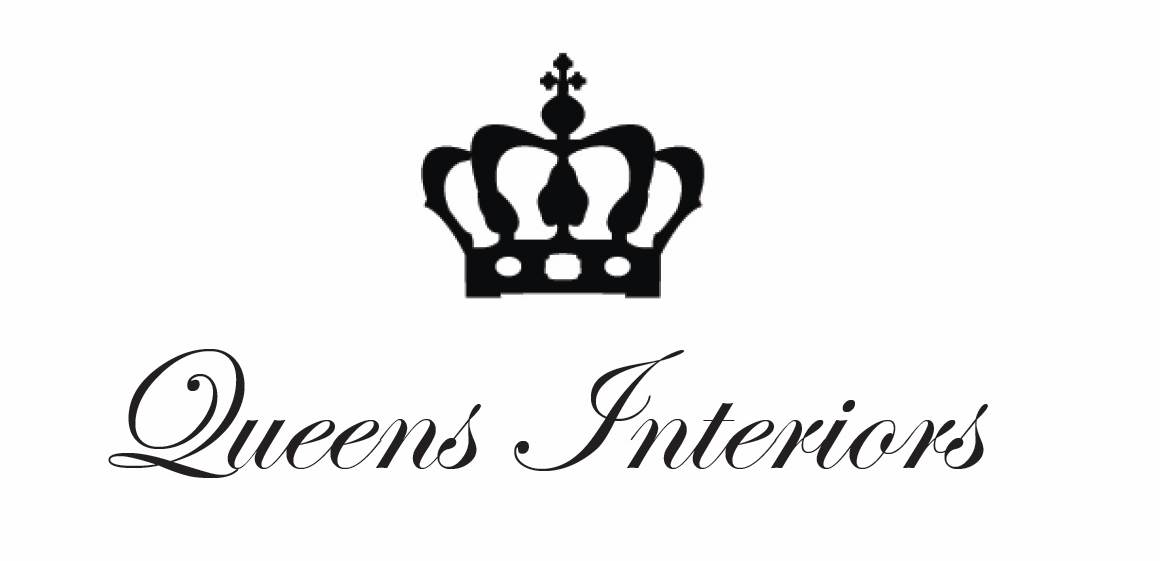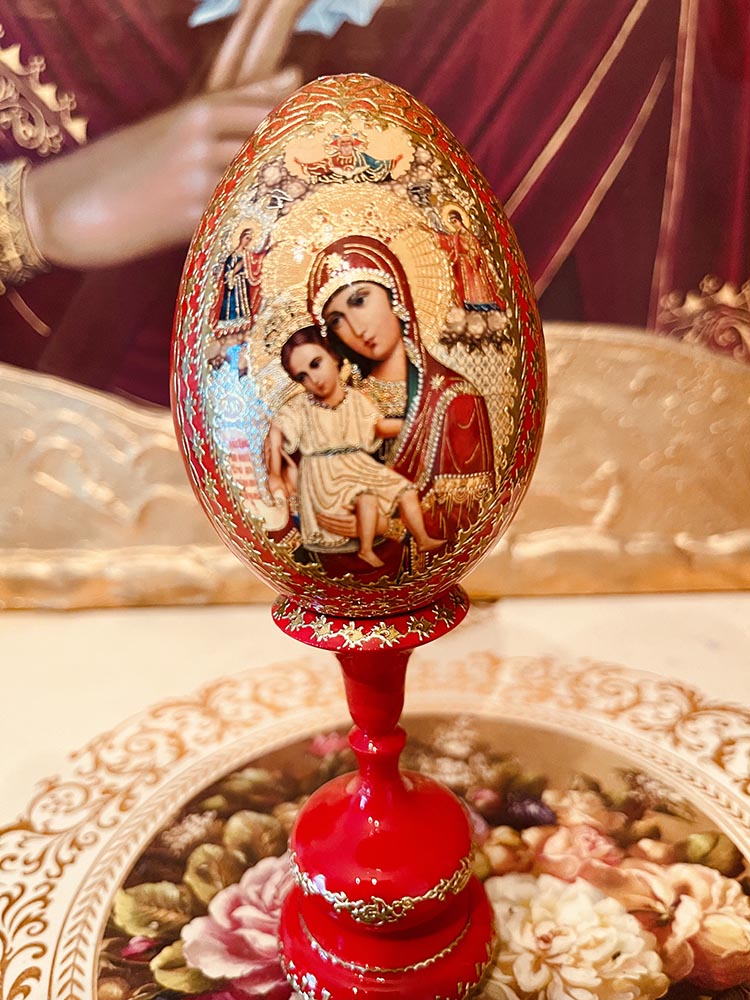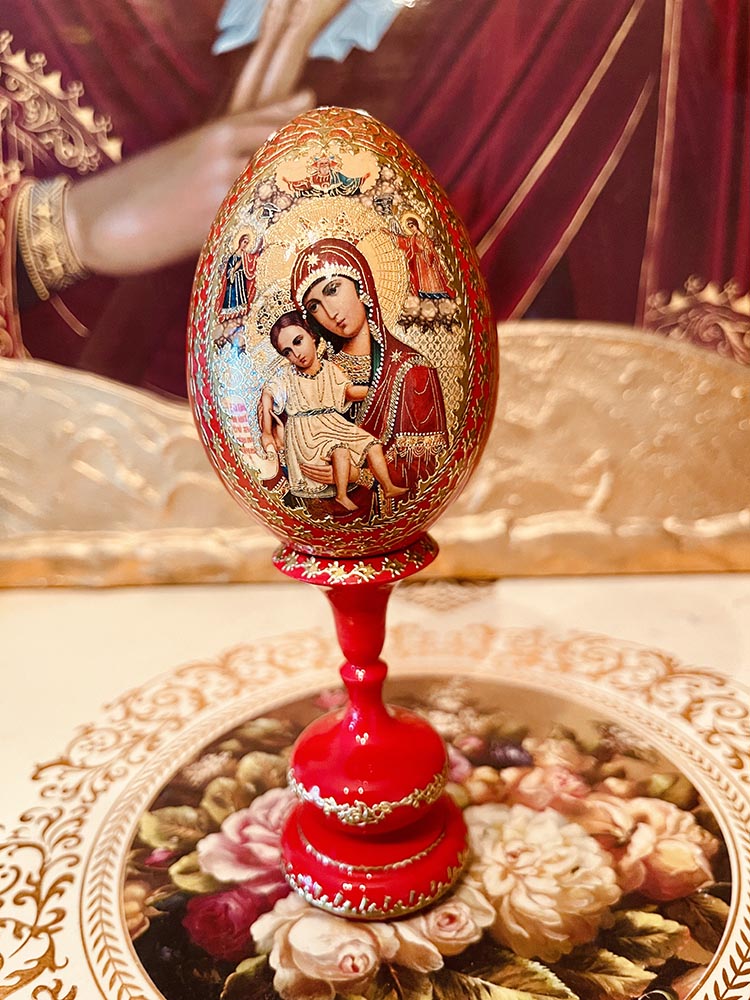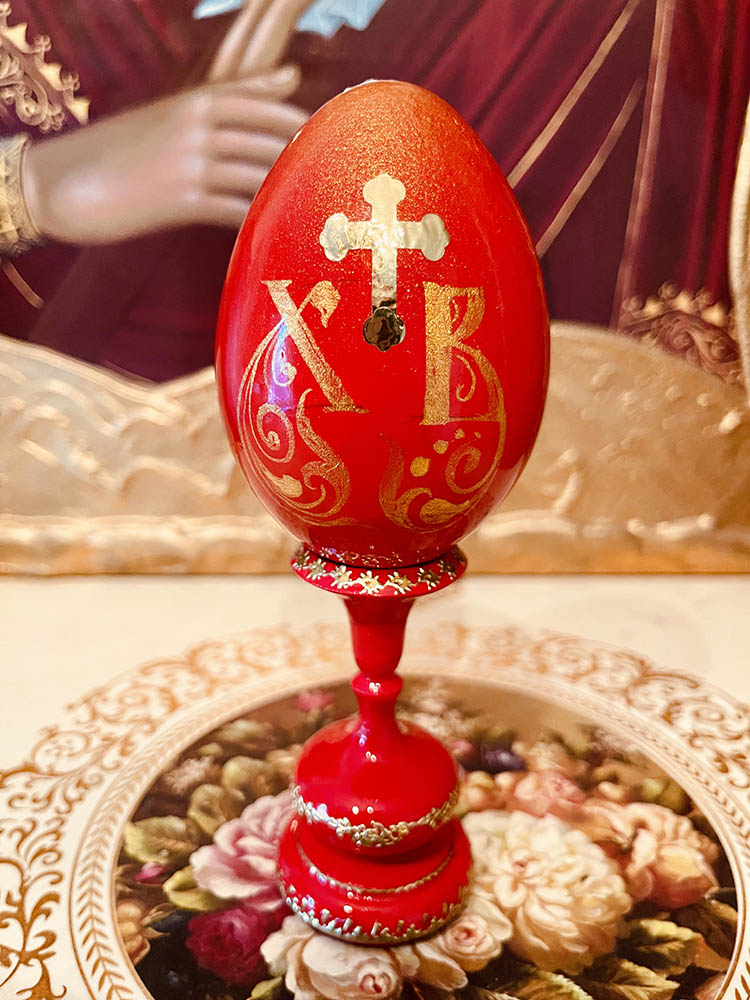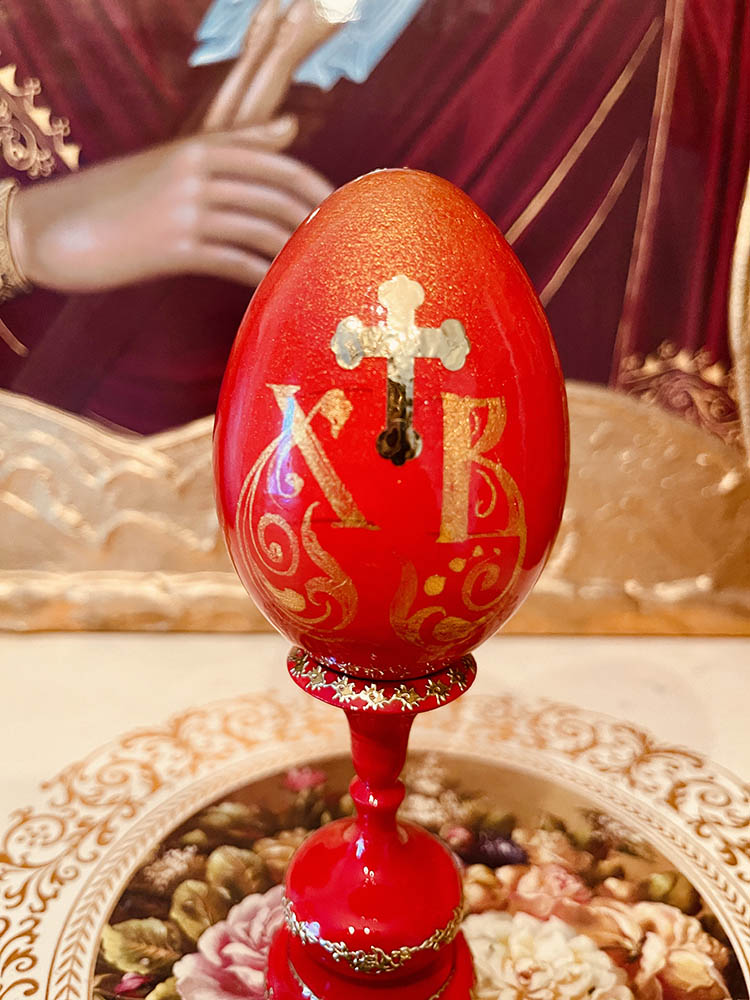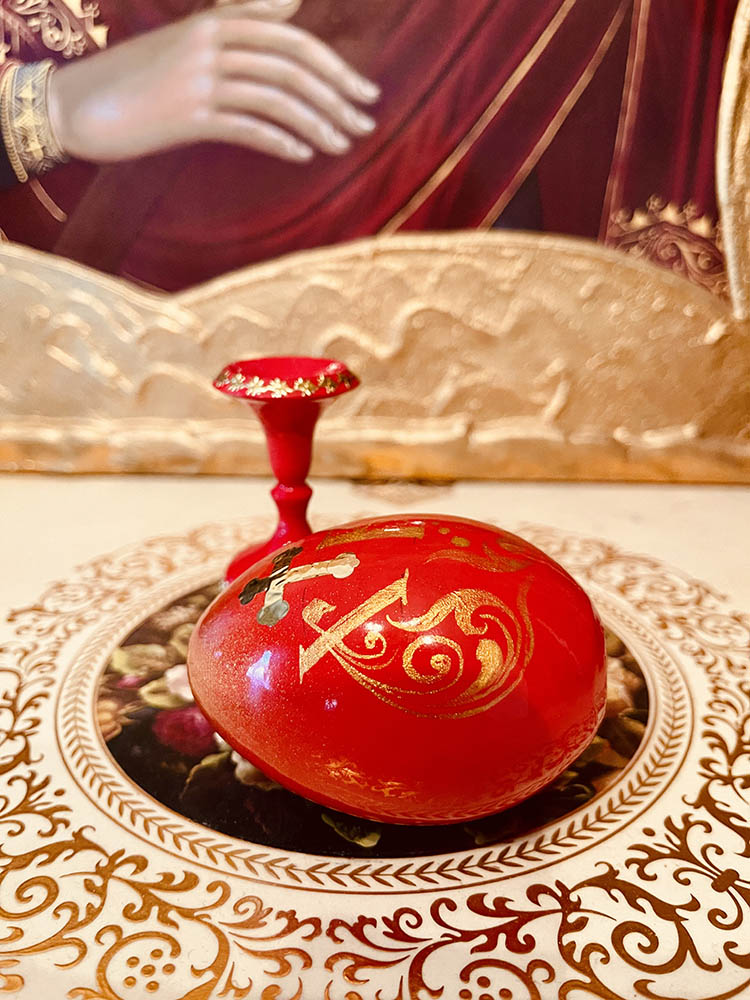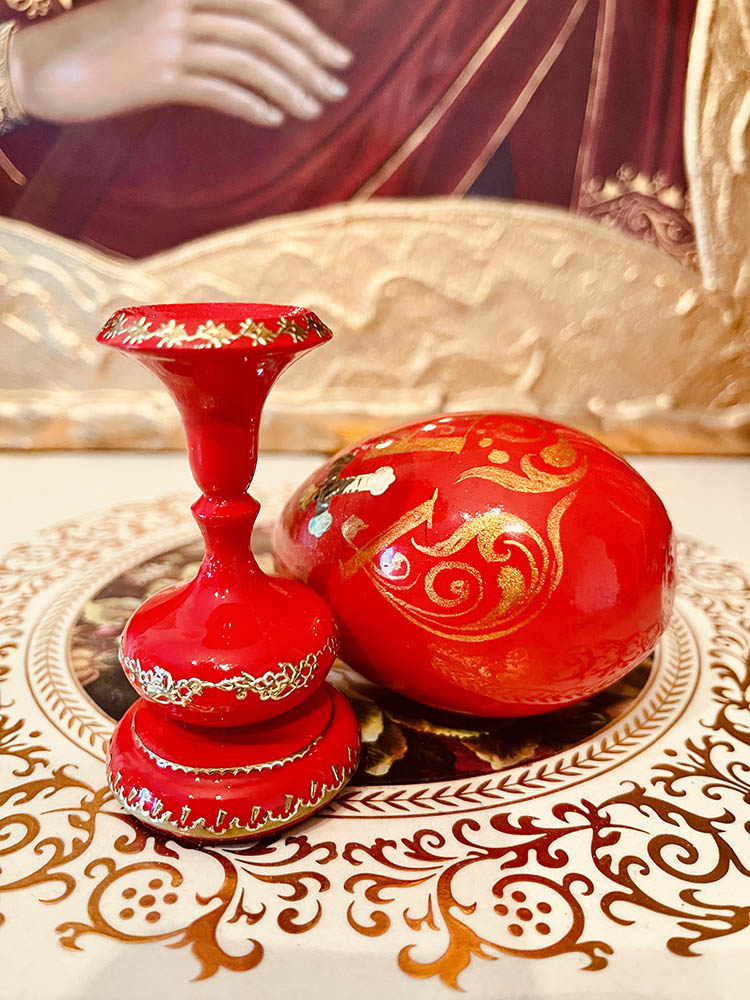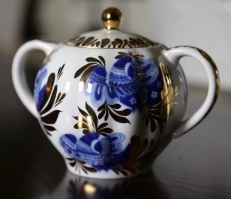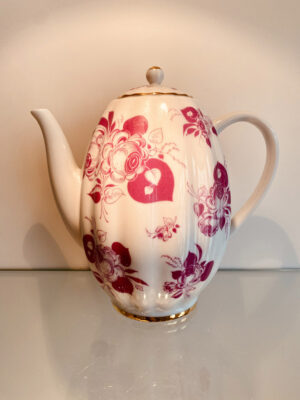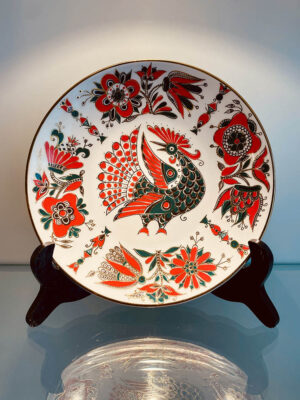Beskrivning
Det här är ett handgjort dekorationsägg avsett till påsken. Det är handgjort på trä och handmålat. Ägget har en ikonbild med Maria och Jesusbarnet på en gyllene bakgrund och med gulddekor på en röd botten. På den andra sidan har den en kristen symbolik och ett kors gjort av bladguld. Ett fantastiskt hantverk.Den har ett stativ som ingår och med samma röda färg med målade gulddekorationer. Ägget är ca 8 cm högt och mäter ca 6 cm över bredaste punkten rakt över. Med stativet mäter den ca 15 cm. Det här ägget är ryskt ortodoxt . Den är gjord någon gång på 1900-talet.
I länder med ortodox tro har ägget en uppståndelsesymbolik. I den kristna traditionen är ägget en urgammal påskrelaterad symbol som står för Kristi uppståndelse. I den ortodoxa traditionen har man sedan länge firat påsk genom att ge ägg till varandra samtidigt som man kysser varandra på kinderna och säger , Kristus är uppstånden , och man får till svar, Sannerligen uppstånden. I det Kejserliga Ryssland liksom hos de ortodoxa var påsken årets största högtid. På 1800-talet började man tillverka påskägg i trä, ädelmetaller, porslin och mineraler och det blev en egen gren inom konstindustrin.Äggen fanns både som prydnadsföremål och smycken. Det var inte bara bland vänner man gav bort ägg utan man vet att Rysslans sista Tsar Nikolaj II gav sina påskgäster 800 påskägg 1902. De mest berömda äggen under kejsartiden blev äggen tillverkade av Carl Fabergé. Kejsare Alexander III beställde ett ägg till sin hustru 1885 och sedan fortsatte traditionen. Totalt lär det ha tillverkats ca 50 ägg. Men traditionen att tillverka och måla ägg till påsk lever fortfarande kvar. I Ukraina heter de Pysanka vilket betyder just påskägg. Det används bara där man målar äggen i Ukrainska folkliga traditioner.
Orthodox Decoration Egg for Easter No9
This is a handmade decoration egg intended for Easter. It is handmade on wood and hand painted. The egg has an icon image with Mary and the baby Jesus on a golden background and with gold decoration on a red background. On the other side, it has Christian symbolism and a cross made of gold leaf. An amazing piece of craftsmanship.It has a stand included and with the same red color with painted gold decorations. The egg is about 8 cm high and measures about 6 cm across the widest point straight across. With the stand, it measures approx. 15 cm. This egg is Russian Orthodox. It was made sometime in the 20th century.
In countries with orthodox beliefs, the egg has a resurrection symbolism. In the Christian tradition, the egg is an ancient Easter-related symbol that represents Christ’s resurrection. In the Orthodox tradition, people have long celebrated Easter by giving eggs to each other while kissing each other on the cheeks and saying, Christ is risen, and you get the answer, Truly risen. In Imperial Russia as well as among the Orthodox, Easter was the biggest holiday of the year. In the 19th century, Easter eggs began to be made in wood, precious metals, porcelain and minerals, and it became its own branch within the art industry. The eggs were found both as ornaments and jewellery. It was not only among friends that eggs were given away, but it is known that Russia’s last Tsar Nicholas II gave his Easter guests 800 Easter eggs in 1902. The most famous eggs during the imperial era were the eggs manufactured by Carl Fabergé. Emperor Alexander III ordered an egg for his wife in 1885 and then the tradition continued. A total of about 50 eggs are said to have been produced. But the tradition of making and painting eggs for Easter still lives on. In Ukraine they are called Pysanka, which means Easter egg. It is used only where the eggs are painted in Ukrainian folk traditions.
